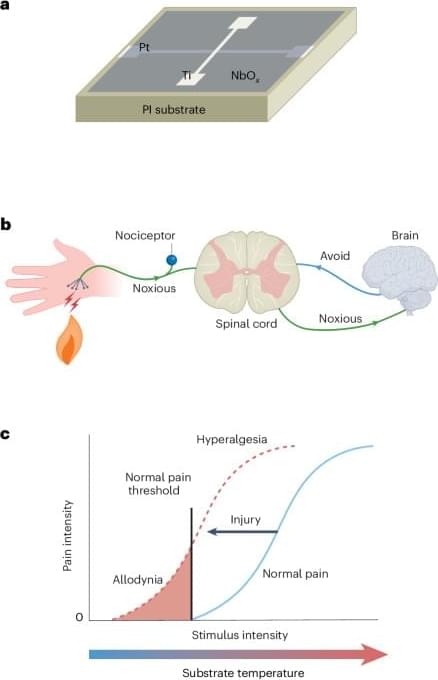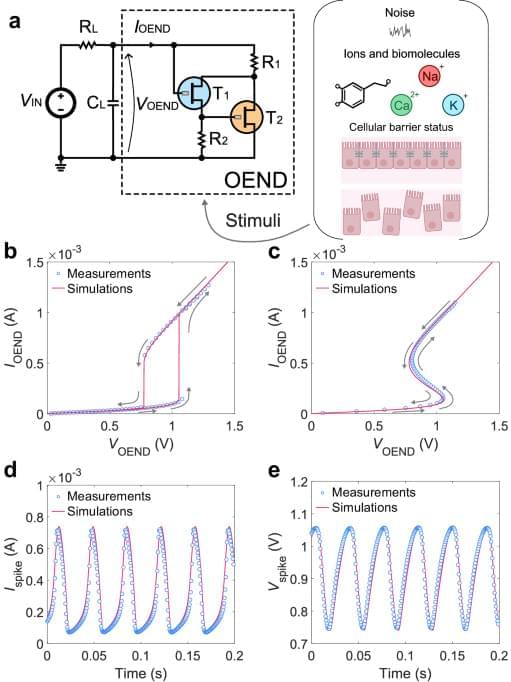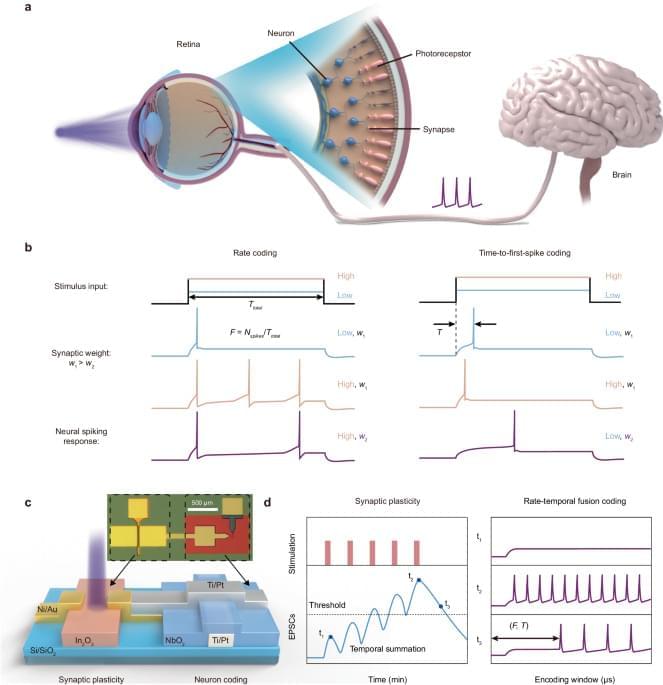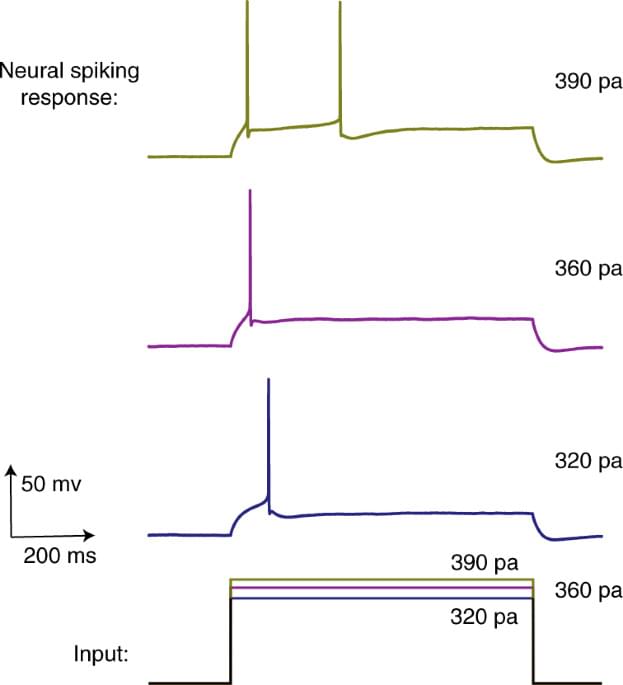Heat facilitates electrical resistance switching in Mott insulators and can synergistically enhance neuromorphic computing.





Several thousand sensors distributed over a square kilometer near the South Pole are tasked with answering one of the large outstanding questions in physics: does quantum gravity exist?
The sensors monitor neutrinos —particles with no electrical charge and almost without mass—arriving at the Earth from outer space. A team from the Niels Bohr Institute (NBI) at the University of Copenhagen have contributed to developing the method which exploits neutrino data to reveal if quantum gravity exists.
“If as we believe, quantum gravity does indeed exist, this will contribute to unite the current two worlds in physics. Today, classical physics describes the phenomena in our normal surroundings such as gravity, while the atomic world can only be described using quantum mechanics. The unification of quantum theory and gravitation remains one of the most outstanding challenges in fundamental physics. It would be very satisfying if we could contribute to that end,” says Tom Stuttard, assistant professor at NBI.

Organic electrochemical artificial neurons (OANs) are the latest entry of building blocks, with a few different approaches for circuit realization. OANs possess the remarkable capability to realistically mimic biological phenomena by responding to key biological information carriers, including alkaline ions, noise in the electrolyte, and biological conditions. An organic artificial neuron with a cascade-like topology made of OECT inverters has shown basic (regular) firing behavior and firing frequency that is responsive to the concentration of ionic species (Na+, K+) of the host liquid electrolyte33. An organic artificial neuron consisting of a non-linear building block that displays S-shape negative differential resistance (S-NDR) has also been recently demonstrated34. Due to the realization of the non-linear circuit theory with OECTs and the sharp threshold for oscillations, this artificial neuron displays biorealistic firing properties and neuronal excitability that can be found in the biological domain such as input voltage-induced regular and irregular firing, ion and neurotransmitter-induced excitability and ion-specific oscillations. Biohybrid devices comprising artificial neurons and biological membranes have also shown to operate synergistically, with membrane impedance state modulating the firing properties of the biohybrid in situ. More recently, a circuit leveraging the non-linear properties of antiambipolar OMIECs, which exhibit negative differential transconductance, has been realized35. These neurons show biorealistic properties such as various firing modes and responsivity to biologically relevant ions and neurotransmitters. With this neuron, ex-situ electrical stimulation has been shown in a living biological model. Therefore, the class of OANs perfectly complements the broad range of features already demonstrated by solid-state spiking circuits (Supplementary Table 1), offering opportunities for both hybrid interfacing between these technologies and new developments in neuromorphic bioelectronics.
Despite the promising recent realizations of organic artificial neurons, all approaches still remain in the qualitative demonstration domain and a rigorous investigation of circuit operation is still missing. Indeed, quantitative models exist only for inorganic, solid-state artificial neurons without the inclusion of physical soft-matter parameters and the biological wetware (i.e., aqueous electrolytes, alkaline ions, biomembranes)36,37. This gap in knowledge significantly impedes the simulation of larger-scale functional circuits, and therefore the design and development of integrated organic neuromorphic electronics, biohybrids, OAN-based neural networks, and intelligent bioelectronics.
In this work, we unravel the operation of organic artificial neurons that display non-linear phenomena such as S-shape negative differential resistance (S-NDR). By combining experiments, numerical simulations of non-linear iontronic circuits, and newly developed analytical expressions, we investigate, reproduce, rationalize, and design the wide biorealistic repertoire of organic electrochemical artificial neurons including their firing properties, neuronal excitability, wetware operation, and biohybrid formation. The OAN operation is efficiently rationalized to include how neuronal dynamics are probed by biochemical stimuli in the electrolyte medium. The OAN behavior is also extended on the biohybrid formation, with a solid rationale of the in situ interaction of OANs with biomembranes. Non-linear simulations of OANs are rooted in a physics-based framework, considering ion type, ion concentration, organic mixed ionic–electronic parameters, and biomembrane properties. The derived analytical expressions establish a direct link between OAN spiking features and its physical parameters and therefore provide a mapping between neuronal behavior and materials/device parameters. The proposed approach open opportunities for the design and engineering of advanced biorealistic OAN systems, establishing essential knowledge and tools for the development of neuromorphic bioelectronics, in-liquid neural networks, biohybrids, and biorobotics.

One of the ambitions of computational neuroscience is that we will continue to make improvements in the field of artificial intelligence that will be informed by advances in our understanding of how the brains of various species evolved to process information. To that end, here the authors propose an expanded version of the Turing test that involves embodied sensorimotor interactions with the world as a new framework for accelerating progress in artificial intelligence.

Human visual neurons rely on event-driven, energy-efficient spikes for communication, while silicon image sensors do not. The energy-budget mismatch between biological systems and machine vision technology has inspired the development of artificial visual neurons for use in spiking neural network (SNN). However, the lack of multiplexed data coding schemes reduces the ability of artificial visual neurons in SNN to emulate the visual perception ability of biological systems. Here, we present an artificial visual spiking neuron that enables rate and temporal fusion (RTF) coding of external visual information. The artificial neuron can code visual information at different spiking frequencies (rate coding) and enables precise and energy-efficient time-to-first-spike (TTFS) coding. This multiplexed sensory coding scheme could improve the computing capability and efficacy of artificial visual neurons. A hardware-based SNN with the RTF coding scheme exhibits good consistency with real-world ground truth data and achieves highly accurate steering and speed predictions for self-driving vehicles in complex conditions. The multiplexed RTF coding scheme demonstrates the feasibility of developing highly efficient spike-based neuromorphic hardware.



Spiking neural networks could offer a low-energy consuming solution to deep learning applications on the edge and in mobile devices. Using temporal coding, where the timing of spikes carries extra information, a new method efficiently converts conventional artificial neural networks to spiking networks.